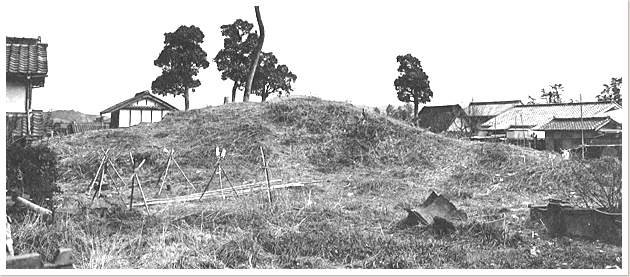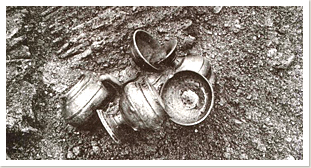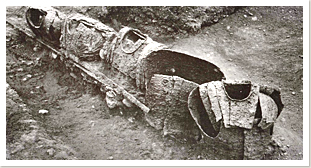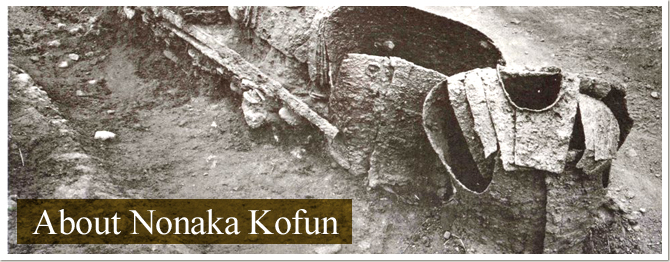Nonaka Kofun
Built in the 5th century in what is now 3-chōme, Nonaka, Fujiidera City, Osaka Prefecture, the Nonaka Kofun tumulus is situated roughly at the center of the Furuichi Tomb Cluster (kofun-gun), which, together with the Mozu Tomb Cluster, forms the “Mozu-Furuichi Kofun-gun, Ancient Tumulus Clusters,” a site inscribed in 2010 on Japan's Tentative List for World Heritage Sites.

Nonaka Kofun is a hōfun (square tomb), 37 meters long on each side. It was built near Hakayama Kofun, which spans at total of 225 meters in length. Nestled in a residential neighborhood, what is now known as Nonaka Kofun was simply called urayabu(a backyard grove) by local residents until an excavation revealed its identity as a burial mound.

 |
The 1964 excavation by the Japanese History Laboratory of Osaka University revealed that this small kofun offered some important clues for the investigation of foreign interaction and the sociopolitical environment of the Kofun period. The fruits of subsequent research were compiled in Kawachi Nonaka Kofun no Kenkyū (Report of the excavation of the ancient burial mound at Nonaka in Kawachi country) (The Japanese History Laboratory of Osaka University, 1976). |
| This web site offers a guided journey back to the time of Nonaka Kofun through videos of excavations, photos of numerous grave goods, including armor, iron implements, and rare pottery that was highly prized during its time, and inquiries into the identity of the person buried in the tomb, informed by valuable research findings. |  |





